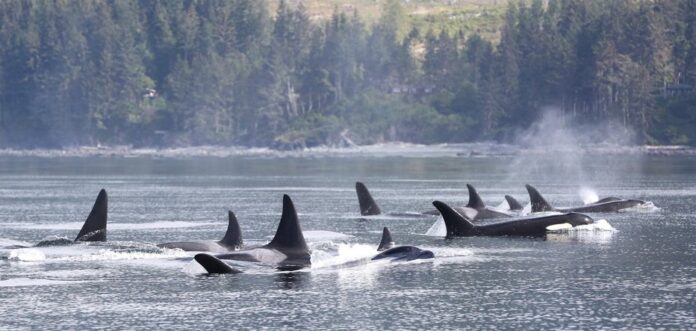It would appear this year has been the year to see Bigg’s killer whales in B.C. waters, according to the Pacific Whale Watch Association and Orca Behavior Institute.
According to the institute, which compiles reports from whale watchers and regional groups, there were 1,270 unique sightings of Bigg’s killer whales in the Salish Sea this year until the end of October.
They say this beats last year, which set a record 1,220 unique sightings. A unique sighting is a sighting of a distinct group of Bigg’s killer whales on a particular day.
According to institute director Monika Weiland Shields, this shows large growth over a decade.
“Ten years ago, we were only getting 15 per cent of that,” said Shields. “This is the ninth year out of the last 10 that the record has been broken. Only 2020 showed a slight dip, probably due to decreased observation due to COVID-19.”
Pacific Whale Watch Association executive director Erin Gless adds that these whales were once referred to as ‘transient’ killer whales because sightings were so rare. However, she says they are now seeing them almost daily and that is mainly due to food.
“Bigg’s killer whales feed on marine mammals, primarily seals, sea lions and porpoises,” said a media release.
They add that their food was once the target of government-funded bounty programs as they were seen as a target to local fisheries. Since their protection, populations have returned and so too have the whales.
When to comes to other species, however, it is looking like a low year for salmon eating killer whales like the Southern Residents.
They say Chinook salmon populations have declined, leaving less food for the resident whales.
“Until we restore the major Salish Sea Chinook salmon runs particularly on the Fraser River, it’s clear the Southern Residents will continue to spend more time on the outer coast where they have the chance to encounter a wider variety of salmon runs from different river systems,” said Shields.






